|
In 1999, I saw a blurb on the Honors College listserv advertising for job in the call center. I thought, “Hey, I can talk to people. Why not?” (Little did I know that I would still be writing about phonathon and doing fundraising some 17 years later.) I interviewed and was hired. I arrived excited but a bit nervous for my first night on the job.
I entered the room and the manager told me, “Sit behind Julie and watch what she does. When you feel ready, you get on the phone too.” I watched Julie manipulated the automated computer and calling system and listened to her phone calls. “Do you have a script or checklist?” I asked. “Not really,” she said. “Everyone kind of makes it up as they go along.” Really, this was my introduction to being a student fundraiser! It’s amazing to me that I stayed. But, I’m stubborn. The manager that hired me left and soon a student supervisor, Becky, graduated took over operations. Becky taught me something very important: Look to best practices in order to improve and grow. She read books about how other call centers operated and visited phonathons at both peer institutions and aspirational schools. And she began to change some things. I became one of Becky’s student supervisors and was helping her implement these positive changes. She did things that made us feel like Chicken Little. “Instead of giving up immediately after one ask. We are going to ask two times for money,” Becky said. “Oh no! The sky is falling!” the supervisors would cry. But it didn’t. Our participation rate soared. Becky said, “I am going make it mandatory to ask for a credit card.” “The sky will fall!” we asserted. It didn’t and our credit card giving rate went through the roof. Time after time, this was the story. Soon, we began to believe her when she made “crazy” suggestions. I had no idea at the time but I was learning the basics of “evidence-based fundraising”: looking at the data to drive your decisions, not anecdotal evidence or your gut feeling. Your gut feeling is fallible. At the heart of it, evidence-based fundraising is about using the scientific method. Testing things and looking to the numbers to tell the truth of the situation. Complaints in the call center are one example of this: your boss hears of 3 complaints. To them it seems like a pattern, perhaps the beginning of a crisis. But – you need to put this into context for them. You could have had over 10,000 contacts that year. That means those complaints represent only 0.03% of your interactions with constituents! That’s pretty great. This is evidenced based fundraising at work. We can all be a bit “Chicken Little” sometimes, so we have to have the discipline of the evidence to fall back on before we make decisions that can keep from our full potential at best, or at worst, can hurt our institutions.
1 Comment
One of my most favorite techniques for improving caller motivation is to write letters to local businesses to ask for “gifts-in-kind” to use as prizes for outstanding callers. That idea is far from new, but there is one tweak that I think many haven’t thought of that makes all the difference in terms of success.
Many universities and colleges commission economic impact studies that quantify the value that these higher educational institutions have on their local economies. These studies usually herald impressive numbers, from the number of jobs provided by the university to the total estimated dollars of economic impact. Here are a few examples to show you what you’re looking for:
If you can get your hands on a study like this specific to your institution, you will be able to craft a letter that is optimally successful. Some studies have a statistic that actually shows how much money university students spend in the local marketplace, like the ones from Notre Dame and South Carolina above. If you can get this figure, it’s clutch. The data from these sorts of studies will motivate the businessperson to get their business more in front of students. They will see what a significant portion of their business that students (and the university in general) represents. And you will be providing them with a quick and easy way to advertise to students. All they need to do is provided a few coupons for free merchandise or services and you will not only put them on your webpage or Facebook (or both) but you’ll give these out only to the top performers so they get to try their products. To find an economic impact study for your institution, start just by googling “economic impact study” and your institution’s name. If nothing comes up, contact the College of Business or Economic Development department at your institution and they may know of a study or where to find it. Some universities do a great job of promoting this important information and others don't exactly. It may be hidden away in some office of institutional research. Put it to good use. Do you solicit “gifts-in-kind” from local business for your phonathon? If you have a killer letter that you use, please share the text in the comments!  Goal: a personal or organizational desired end Projection: a calculation of some future thing These two terms are related but subtly different. Generally speaking, for a healthy organization, the projections drive the goal setting process. However, at some organizations, the goal is a different (and perhaps totally unrelated) number to what you project that you can actually raise. At some institutions, an unreasonable, unrealistic goal situation may arise from a team leader that doesn't understand the difference between a goal and a projection and they pick an arbitrary figure that sounds good. ("Let's raise 10% more this year than last year", for example.) Or, it may have come about because of real budgetary needs of the institution for unrestricted support. Creating projections is a tedious process requiring a patient analysis of past performance and building models for future performance. So, if you have a firm goal set before you that you know (or believe) you cannot reach, why should you bother to create elaborate projections? Here are three important reasons to do projections even if your goal is already set: 1) Projections will help you to pinpoint the shortfall Setting projections shows you where the program is not performing to expectations and why the goal is not feasible (assuming that's true). It helps you to tell the story to those in management of what is really happening with the fundraising. 2) The process may help you to identify potential areas of opportunity Projections can show you opportunities that you might have overlooked. You build your projections segment by segment and it is possible that you might have some new segments that you haven't solicited before or that you have a new strategy for. These may help you get closer to your goal. 3) You need the projections to become a lobbyist for your program. It's illogical to do the same thing every year and expect different results. With a projections spreadsheet, you can show what's possible with more budgetary resources. You can tell the story that with [this much] future investment in the program, [this much] more revenue can result.  Now is the time to be thinking about how you are going to train your new callers. But, the truth is you aren’t just training phonathon callers. You are training young fundraisers. If you do it right, every caller in your center will have a knowledge of fundraising that rivals most experienced development officers. The techniques that your young fundraisers learn can be applied in nearly any area of business that they choose to pursue. If your system reinforces these lessons, they will be incredible young fundraisers. They will raise serious money for your institution and have an impact on many students, faculty, and staff. From the time he or she is hired, you are a part of that student fundraiser’s education. He or she will also be an integral part of the life of your educational community. A Holisitic Approach to Training If staffing is about quantity, training is about quality. Of course, you want staffing to be about quality too but speed takes precedence. In training, you should still be as efficient as possible but that isn’t as important as being effective. You want to take all of these students you hired and make them into incredible young fundraisers. When someone says phonathon training, generally “new hire training” is the first association we make, as if that’s the only kind of training there is in a call center. Training is necessary throughout the entire time that a caller works with your phonathon. If we take a more holistic approach like this, quality and quantity begin to work together. Believe it or not, you can get more done in less time and it works to the benefit of both the callers and the program. Here’s my proposal: what if we presume that for the first couple of weeks new callers will be calling only future donors (my optimistic phrase for a non-donor)? Suddenly, there a ton of things we just wouldn’t need to cover in new hire training. Upgrades, special giving societies, leadership levels, extra objection responses and fresh ways to build rapport could wait a couple of weeks or a month. Now this change of perspective on new hire training as outlined above does three amazing things:
Training doesn’t only happen on the front end. Training actually starts in the interview process, as that shapes how the employee views the expectations and responsibilities. And training continues every single night in team meetings, coaching, and formal continuing education sessions. Training continues as new hires become donor callers, donor callers become new hire mentors, and lead callers become student supervisors. Once you switch your perspective, you don’t feel the pressure to squeeze everything in during new hire training. You can then consciously design a holistic growth and education program that will teach each student fundraiser what they need to know when they are ready to learn it. Oh, by the way, this kind of "life-cycle" training that I recommend will have the end result that you “grow your own” call center leaders. If you put these strategies into play, you will have many productive callers, but also many mentors and leaders in your call center. When you get promoted, and you will, you will have graduating seniors ready for a chance to make their mark on your institution. Talk about succession planning!  So, this weekend my debit card/checking account was hacked for over $1,100! Lucky for us, we have a great credit union that helped me get the issue fixed immediately Monday morning and all of it (including the overdraft fees that it caused) will be fully refunded. My mother asked me who actually ends up paying for these issues since the culprits are rarely caught. Strangely, I knew the answer because I have been trained on PCI compliance. The credit card companies end up eating the cost of fraudulent charges. If you aren’t familiar with the term, PCI or PCI DSS stands for Payment Card Industry Data Security Standard and it is an effort on the part of credit card companies to prevent fraud and protect their bottom line. Anyone who charges credit or debit card is responsible for handling cards in a PCI compliant way. As fundraisers (and more specifically phonathon managers), if you aren’t sure what PCI is or whether you are PCI compliant, you probably aren’t doing it right. Check with your Advancement Services staff and ask about this. Educate yourself, your student supervisors and your callers. The standards were updated in April 2016 and you can download them for review by visiting www.pcisecuritystandards.org/. This happened to me at the University of South Carolina. We utilized every standard and precaution and took it very seriously. However, over a six week period, we started to get a string of complaints about rogue charges a few days after the alumni had made gifts via phonathon. There was no traceable pattern to the issues. Although we never identified the offending caller, we did isolate through analysis of our nightly seating charts that it must have been a caller who was overhearing other callers read out the number to the prospect for verification. We changed that part of the script and never had a problem again. I talk about training our student callers about donor confidentiality and PCI compliance as often as I can because it impacts donor confidence in our organizations but also it impacts families. Most donors are not multi-millionaires, they are well meaning folks whose monthly budget can be wrecked by fraudulent charges and the time it takes to clean them up. So, review the policies and start asking questions about how data and credit/debit cards are handled in your shop. Train your employees about properly taking care of the data, which is really taking care of people. It’s part of stewardship and it’s super-important. If you found this article helpful, you may also be interested in my e-book How to Staff Your Phonathon Super-Fast: Seven Secrets to Fill the Seats. It's on sale now for $40 with the coupon code fillseats (valid through 9/1/16). This book guides you through innovative ideas and practices to turbo-charge your phonathon staffing efforts and break free from the hamster wheel of turnover. It also includes an appendix full of templates and samples to get you started implementing this system fast. Mock Calling is a critical part of any new caller training session. It's also important for new major gift officers and leadership giving officers to practice in this same way. All-to-often, though, the exercise becomes stale and perfunctory. Here are 5 ideas to re-invigorate your mock calling practice, whether you work in phonathon, annual giving, or major gifts.
Voicemail Have your callers each call from their cell phones and leave a voicemail on your office line of an abbreviated script. Then have the entire training class listen to each voicemail and critique the caller based on enunciation, speed, sincerity and other qualities. Scenario Cards Create a set of cards with fake prospects on them. Create corresponding cards with background information on how the prospect is predisposed to react to an ask. Pair up callers and give them several sets of cards to work through alternating between caller and prospects. (This works for leadership and major gift officers too. Just practice asking for a visit and handling objections to taking the visit.) Observation Calls Have one caller go to a nearby office (far enough so they cannot see or hear the group) and have them call a line with a speaker phone function. Put the call on speaker phone so the rest of the class can hear the conversation. Make sure everyone gets a turn and that you debrief after every call what went well and what could be done better. Rapid Fire Objection Practice Divide callers into teams and have them stand in two rows. Give each caller at the front of the line an objection. “I can’t give this year. I just had a baby.” Caller must respond immediately. After each round, have an impartial judge (student supervisors or lead caller) award a point to the team whose caller handled that round best. Winning team gets a prize. Judge selects an MVP from both teams. (For full-time fundraising staff, just practice objections to taking the visit.) Power Intro Drills Practice just the first 10-15 of a call, including asking for the prospect, introducing the institution and yourself and lastly stating why you are calling. Every caller gets several chances and then everyone gets to go again at the end of practice. Select a most improved caller or two who show significant improvement. Judge their intros on sincerity, diction, energy and enthusiasm. Every fundraiser needs a strong introduction whether they are a student caller or the CEO. If you found this article helpful, you may also be interested in my e-book How to Staff Your Phonathon Super-Fast: Seven Secrets to Fill the Seats. It's on sale now for $40 with the coupon code fillseats (valid through 9/1/16). This book guides you through innovative ideas and practices to turbo-charge your phonathon staffing efforts and break free from the hamster wheel of turnover. It also includes an appendix full of templates and samples to get you started implementing this system fast. Over the last few weeks, I've been posting about a wide variety of best practices to improve contact rates in phonathon. This post will serve to consolidate this information and recap the recommendations.
It is not possible to raise money from someone that you can't get in touch with, so contact rate is crucial to a healthy phonathon. When your contact rate improves, you will raise more money even if call quality doens't improve at all. It is not optional. You must have a plan to get your data clean and valid and keep it that way. First Steps to Improve Phonathon Contact Rates: This post outlines the importance of contact rates and details the basic research processes that every phonathon should be doing prior to loading data for the year. Next Steps to Improve Your Phonathon Contact Rate (Wireless ID and Wireless Append): This post lays out the trends with respect to households transitioning to wireless only. Your database must manage phone types properly to accommodate this shift. There are also new data research tools that you need to make use of to acquire cell phone numbers. Continuing to Improve Phonathon Contact Rates (Most Best Practices): In this installment, I recommend that you manage your data so that you do not load known invalid phone numbers for calling again. Once you remove those invalids, you'll need to find more groups to call and I show you how to lobby to call new colleges, schools or units. Improving Contact Rates in Phonathon with Where-Are-You-Now Emails: Besides making good use of data research services, you should also go to your constituents and ask them to update their information. In this post, I give an overview of sending next day "where-are-you" emails and "where-are-you" email blasts. Young Alumni, Contact Rates and the History of Cell Phones: This post shows why young alumni are a strong group for contact rate and gives a comprehensive argument for why you should not remove young alumni from phonathon. I hope you find these tips helpful. If you implement these strategies, your contact rate will improve. Improved contact rate in your phonathon will mean more money for your institution. Please comment below and let me know your results. Today my first e-book is available for purchase: How to Staff Your Phonathon Super-Fast: Seven Secrets to Fill the Seats. The information in this book has the power to revolutionize your call center operation by starting at the beginning. Staffing.
I will show you how to:
You can’t afford to spend another year spinning your wheels with staffing. Break the cycle of caller turnover for good and begin loving your job now! In this book, you get all the secrets: Everything you need to staff YOUR phonathon FAST. And here’s the bonus: These techniques not only get you the most callers possible with the least amount of time invested. This method will also give you the very best callers and insulate you from caller turnover both in the short term and in the long run. If you want to be a rock star phonathon manager, have amazing fun at work, and ultimately grow your career in philanthropy, this book will put you on that path. There’s no doubt about that. You’ll have great students to train, you’ll quickly get busy raising tons of money for your institution, and your success in crushing your goals will be rewarded with accolades and future job opportunities. What are you waiting for? Let’s get busy creating your staffing plan. Purchase your copy of How to Staff Your Phonathon Super-Fast: Seven Secrets to Fill the Seats today. Before the fall semester ramps up, now is the time to check in and assess the effectiveness of your phonathon scripts. What follows is an excerpt from my book, Successful Fundraising Calls: A Phonathon Scripting Workshop from Academic Impressions. If your scripts need some punching up, this guide walks you through the process of giving your scripts a makeover step by step.
1. Does your script/policies require callers to do at least three distinct asks if the prospect is objecting? a) No way, we trust our callers to make the right decision and not pressure prospects. b) We require it but we don’t monitor it through write-ups or other disciplinary action. c) Yes, absolutely. Callers must overcome objections and ask for the next level. 2. Do you allow open-ended or soft asks without an amount? a) Yes. As long as they are asking, the amount is not important. b) If the prospect sounds mad or needs to speak to his or her spouse, sometimes we do. c) No. An ask is constituted by a direct question and an exact dollar amount. 3. Which of these sounds most like the rapport section of your call? a) I am not sure what our rapport currently sounds like. b) “Last year, ABU was rated #1 in biological sciences research by the American Society for awesome biological stuff…..” c) “Did you know that ABU continues to get more accolades? For instance we were recently named #1 for biological sciences research.” d) “I see you graduated in biology. Do you still work in that field? Wow. That’s interesting! Well, you’ll be pleased to know that we recently named #1 in biological sciences research. Isn’t that great?” 4. What percentage of your callers would know what an “assumptive” credit card ask sounds like a) Huh? What is an assumptive ask? 0% b) Some of the best ones. Maybe 40% c) Any caller that has been around awhile. Over 80% d) All our callers are required to follow an assumptive ask structure. 100% 5. How would you rate the transition between the rapport and first ask in your script? a) We let the callers figure that out. It’s important that the rapport be natural. b) It’s a little clunky. Sometimes when I am coaching that part feels awkward. c) Pretty solid. We try to tie the fantastic things going on at our school to the need for private support. For every A, give yourself 1 point. For each B you marked, give yourself 2 points, for every C give yourself 3 points and if you selected D give yourself 4 points. 5-8 POINTS Your scripts need some work. The scripts don’t provide callers with enough structure for them to feel confident and comfortable asking for money. If you are not requiring three asks or enforcing the delivery of those asks, you are leaving money on the table for your institution. Your alums might not be enjoying these calls as much as they could. Your callers are in danger of becoming de-motivated because they aren’t seeing success. 9-11 POINTS You are on the right track. Your scripts may be having trouble striking that balance between over-scripting and not providing adequate guidance for transitions or special circumstances. Some key tweaks to your system and scripts could result in huge improvements in revenue and fundraising success for your institution. Your callers might need a little boot-camp to get them on board but they’ll thank you as they begin raising lots of money and having a great time at work. 12-17 POINTS Way to go! Your scripts are making it happen! You might need to freshen up key sections, like rapport, your credit card ask, or your transitions. But, you have a great foundation from which to build. Perhaps most of what you need is to put a great coaching and pledge verification system in place to make sure that your awesome script is being put to use in calls. Rock on! If you found this quiz helpful, visit this page to learn more about my book. And subscribe to Real Deal Fundraising and you'll get a free copy of my e-book on Call Center Games. This is the final installment of my series on improving phonathon contact rates.
With average student loan debt loads reaching astronomical levels, many institutions have questioned whether they should give their new graduates a break and exclude them from traditional solicitation methods like mail and phone. (Click here, if you’re interested in learning more about student loan issues.) This is a dangerous consideration for the immediate profitability and long-term viability of phonathon programs. The reason why lies in the history of cell phones. Here’s a quick history lesson and some other reasons why I don’t think you should stop soliciting your young alumni through mail or phone (regardless of student loan status). As I’ve discussed in this series, contact rates are a key statistic that governs the productivity of phonathon programs. Two macro-forces are at work which make young alumni some of the best pools for contact rate these days. Wireless number portability In 2003, it became mandated that users could keep their cell phone number when they transferred wireless vendors. Before that, cell phones numbers were much less stable. Today’s student will likely keep their cell phone number well into adulthood if not forever. The Virginia Tech Effect Since the shootings at Virginia Tech (2007), universities have been implementing systems to collect student cell phone data so that mass text alerts could be sent out on safety issues. The long-term implication of this process is that the numbers (at many institutions) migrate over to the alumni database upon graduation, which is great news for phonathon programs. ACTION ITEM: Check with Advancement Services to make sure that when they undertake their “grad loads” the cell phones on record are coming over as well and are being coded properly. Size of young alumni pools Aside from your institution being able to contact these alumni more easily, these are also probably some of your largest groups. Most institutions have grown leaps and bounds over the last 30-40 years. It’s likely that your organization graduates many more alumni each year now than the institution did 20-50 years ago. If you hopes to keep pace with peer institutions in terms of alumni participation, calling these large, well-connected groups is essential. ACTION ITEM: Do a quick experiment, find out how many alumni have graduated in the last 10 years and then see what just those alumni represented to your phonathon in terms of contacts, dollars and donors. The significance of the number will likely surprise you. Although the average gift is often lower than other groups, participation is usually higher and volume is on your side. Totals add up fast when you have such large groups. Case Building and Setting Expectations Even if a prospect tells you no this year, an important process of philanthropic education occurs. The student caller has still presented the needs of the university and planted a seed which may grow into future giving. The benefit of this cannot be overstated. Solicitation is important even when it results in a refusal. If, for instance, those with student loan debt cannot give this year, having a phone call begins a process of case-building which may resonate in the future when they are able to give. ACTION ITEM: I recommend capturing refusal reasons so they can be tracked over time. If possible, I recommend adding a custom refusal reason for student loan debt and utilize this over the next 3 years to track trends with respect to this refusal reason as an analytical tool. However, restricting solicitation is not the best method for dealing with this refusal. Building a better case over time would be a better way to handle it. Long-term lead generation A report on Cultivating Lifelong Donors (2010) from Blackbaud states: “Research shows that donors make $1,000 gifts to organizations most often when they have already been giving to the organization for about seven years. Long-term research with successful nonprofits also shows that those very same donors are approximately 900% more likely to make a major gift in their lifetime than individuals without that progressive history.” For those of us in higher education, this means that we must acquire our new alumni very soon after graduation. Otherwise, they will develop a habit of giving to another non-profit organization and any major gifts they might make later in life are less likely to be given to our institutions. I hope you found this blog post insightful and helpful. If you did, please subscribe to Real Deal Fundraising. |
Jessica Cloud, CFREI've been called the Tasmanian Devil of fundraising and I'm here to talk shop with you. Archives
July 2020
Categories
All
|
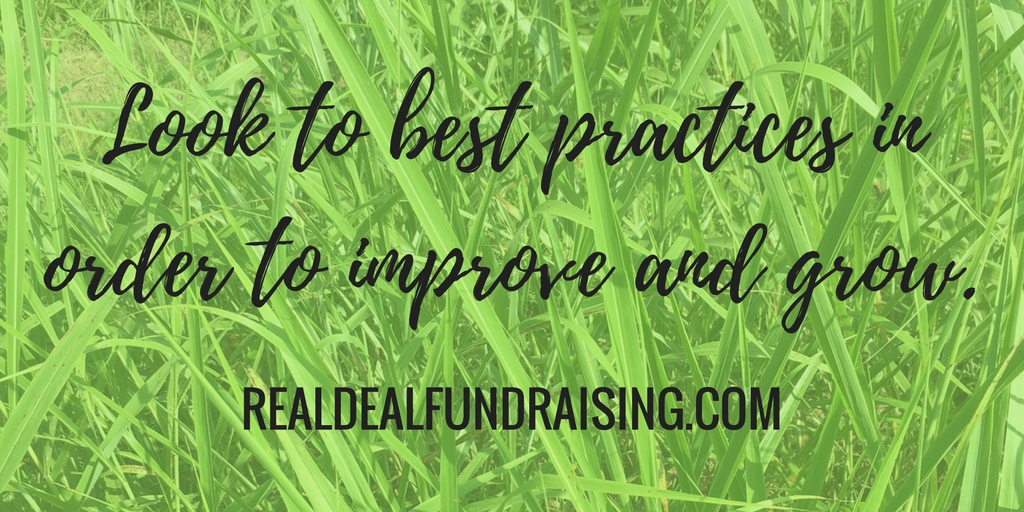
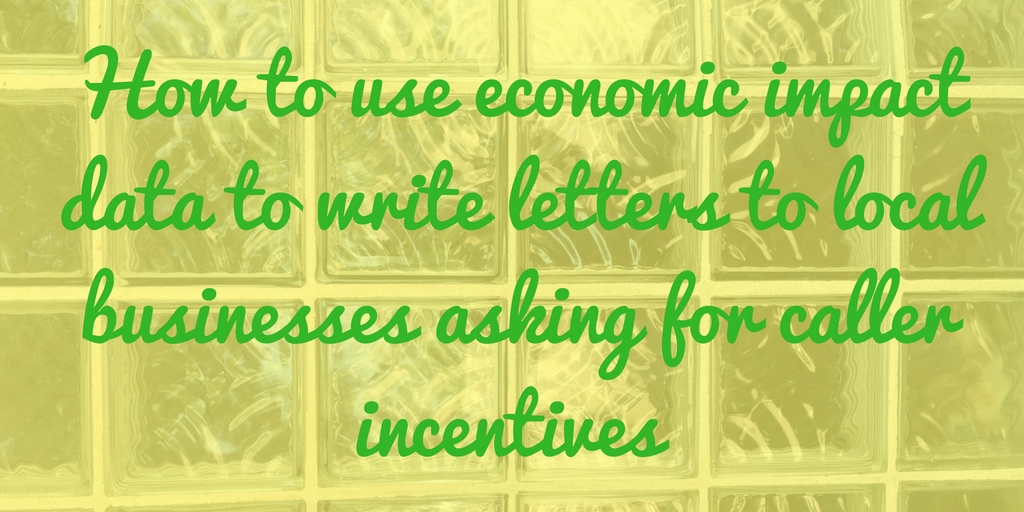
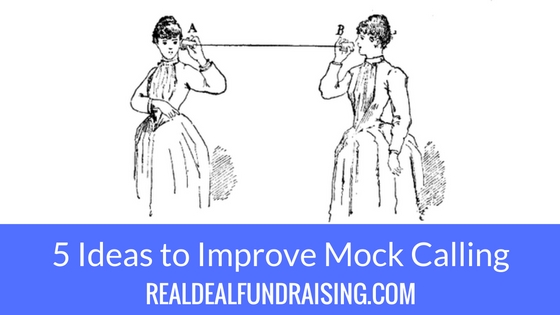
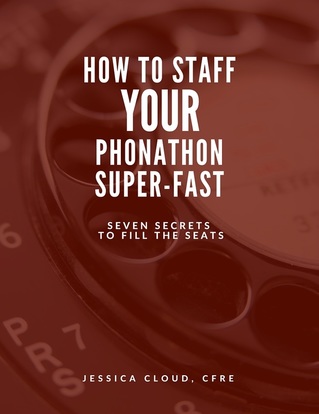
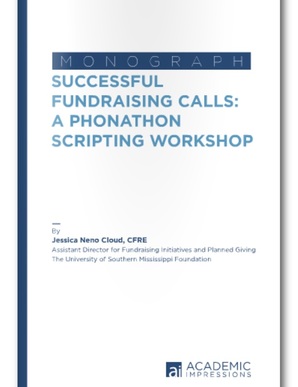


 RSS Feed
RSS Feed
